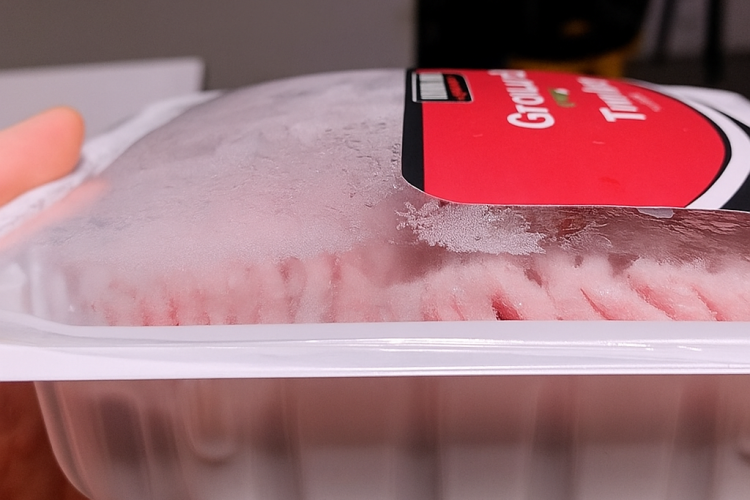Ever Open a Food Package That’s Bloated? Here's What It Really Means—and What You Should Do
If you’ve ever opened your fridge and reached for a snack or ready-to-eat meal, only to find the packaging puffed up like a balloon, you’re not alone. More and more consumers are noticing this odd — and sometimes concerning — phenomenon. It’s called bloated food packaging, and while it might seem harmless at first glance, it can actually be a sign of deeper issues involving food safety, freshness, and even environmental sustainability.
So what’s going on here? Is it just trapped air, or something more? And most importantly — should you eat it or toss it?
Let’s unpack what’s really happening inside those swollen packages.
What Is Bloated Food Packaging?
Bloated food packaging refers to the swelling or inflation of sealed food containers — think plastic bags, vacuum-sealed pouches, or yogurt cups — due to the buildup of gas inside. It’s most often seen in foods with higher moisture content like dairy products, processed meats, fresh produce, and pre-cooked meals.
You might think it’s just air, but in most cases, bloating is caused by gases like carbon dioxide, oxygen, or methane produced by microorganisms or chemical reactions inside the packaging. These gases have nowhere to escape, so they cause the packaging to inflate.
What Causes This Packaging to Swell?
There are a few key culprits behind bloated packaging:
1. Microbial Activity
The most common reason for bloated packaging is bacteria or yeast growing inside the food. As these microbes feed on nutrients, they release gases — mostly CO₂ — that collect inside the sealed package. This is often a sign of spoilage or contamination.
2. Chemical Reactions
Certain reactions, such as fermentation (especially in dairy), also produce gas. For example, yogurt with live cultures may continue fermenting slightly after packaging, causing swelling — even if it's still technically safe to eat.
3. Poor Packaging Design
Some packaging materials aren’t airtight or strong enough to contain gas without ballooning. Weak seals, tiny punctures, or thin films can allow gas to accumulate unevenly or escape partially, making the packaging unstable.
4. Temperature Changes
Heat accelerates microbial growth and chemical reactions. If a product is exposed to fluctuating temperatures — like during transport or improper storage — it can quickly become bloated. Think of a frozen item thawing in a warm truck, then refreezing later — not ideal.
Why Should You Be Concerned?
Bloated food packaging isn’t always dangerous, but it can be. Here’s why it matters:
Food Safety
Bloating often means microbial growth, which may include harmful bacteria like Listeria or Salmonella. Eating spoiled food can lead to serious foodborne illnesses.
Perception of Freshness
Even if the food isn’t spoiled, bloated packaging looks unappealing. Consumers tend to associate swollen packages with bad quality, which can hurt brand trust.
Product Integrity
Inflated packages are more prone to leaks, tears, or bursts, especially under pressure. This can cause messes, food loss, and faster spoilage once the seal is broken.
Environmental Impact
More bloated packaging = more wasted food and materials. Many of these packages are plastic-based and non-biodegradable, contributing to landfill overflow and ocean pollution. It’s a lose-lose for consumers and the planet.
How Can We Prevent This?
There’s no single fix, but multiple strategies can reduce bloating and its negative effects:
Better Packaging Materials
Food manufacturers can invest in high-barrier materials that reduce gas exchange and maintain a better seal, especially for high-risk products.
Stricter Quality Control
Routine checks during production, packaging, and shipping can catch bloating early. Automated sensors and visual inspections can help flag faulty batches.
Temperature Management
Cold-chain logistics — consistent refrigeration from factory to store — can dramatically reduce microbial growth and slow chemical reactions.
Consumer Education
Teaching shoppers what bloated packaging means can help avoid unnecessary panic — or worse, risky consumption. Labels could also include guidance like “bloating may occur naturally” (in safe cases) or warnings when it’s a spoilage indicator.
Final Thoughts
Bloated food packaging isn’t just a weird quirk — it’s a signal. Whether it’s a harmless fermentation process or a sign of spoilage, this inflation tells a story about what’s happening inside your food.
For consumers, it’s important to know the difference between safe bloating and a product gone bad. For producers, there’s a responsibility to improve packaging, monitor product quality, and minimize environmental waste.
As we push for more sustainable and safe food systems, recognizing and addressing issues like bloated packaging is a small but vital step forward.
